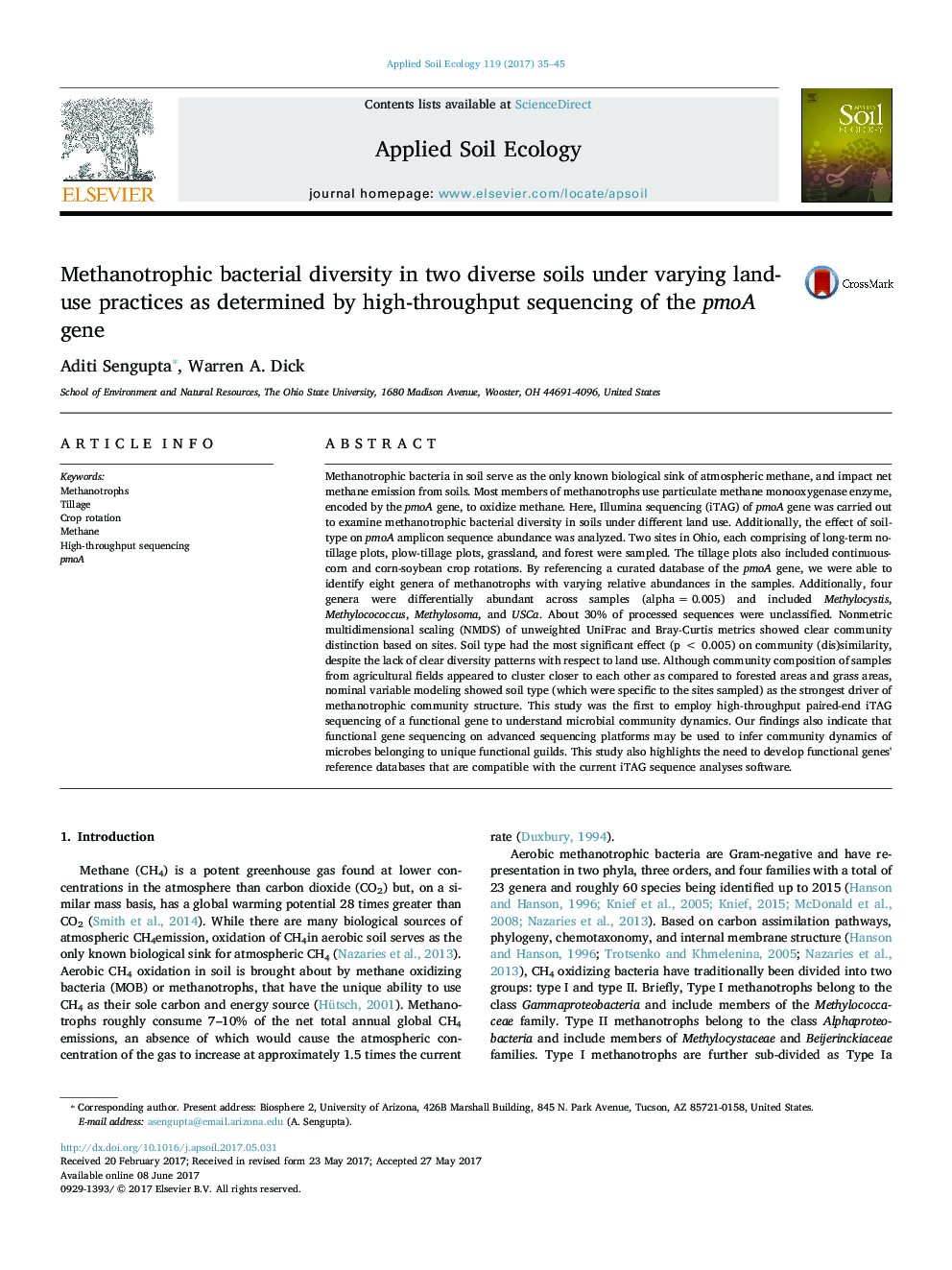| کد مقاله | کد نشریه | سال انتشار | مقاله انگلیسی | نسخه تمام متن |
|---|---|---|---|---|
| 5742612 | 1617765 | 2017 | 11 صفحه PDF | دانلود رایگان |

- High-throughput sequencing of methane monooxygenase gene performed in Ohio soils.
- Preferential distribution of methanotrophic genera identified across locations.
- Soil-type primarily drove community structure of methanotrophs.
- Long-term land use practices were secondary in shaping methanotrophic diversity.
Methanotrophic bacteria in soil serve as the only known biological sink of atmospheric methane, and impact net methane emission from soils. Most members of methanotrophs use particulate methane monooxygenase enzyme, encoded by the pmoA gene, to oxidize methane. Here, Illumina sequencing (iTAG) of pmoA gene was carried out to examine methanotrophic bacterial diversity in soils under different land use. Additionally, the effect of soil-type on pmoA amplicon sequence abundance was analyzed. Two sites in Ohio, each comprising of long-term no-tillage plots, plow-tillage plots, grassland, and forest were sampled. The tillage plots also included continuous-corn and corn-soybean crop rotations. By referencing a curated database of the pmoA gene, we were able to identify eight genera of methanotrophs with varying relative abundances in the samples. Additionally, four genera were differentially abundant across samples (alpha = 0.005) and included Methylocystis, Methylocococcus, Methylosoma, and USCa. About 30% of processed sequences were unclassified. Nonmetric multidimensional scaling (NMDS) of unweighted UniFrac and Bray-Curtis metrics showed clear community distinction based on sites. Soil type had the most significant effect (p < 0.005) on community (dis)similarity, despite the lack of clear diversity patterns with respect to land use. Although community composition of samples from agricultural fields appeared to cluster closer to each other as compared to forested areas and grass areas, nominal variable modeling showed soil type (which were specific to the sites sampled) as the strongest driver of methanotrophic community structure. This study was the first to employ high-throughput paired-end iTAG sequencing of a functional gene to understand microbial community dynamics. Our findings also indicate that functional gene sequencing on advanced sequencing platforms may be used to infer community dynamics of microbes belonging to unique functional guilds. This study also highlights the need to develop functional genes' reference databases that are compatible with the current iTAG sequence analyses software.
Journal: Applied Soil Ecology - Volume 119, October 2017, Pages 35-45